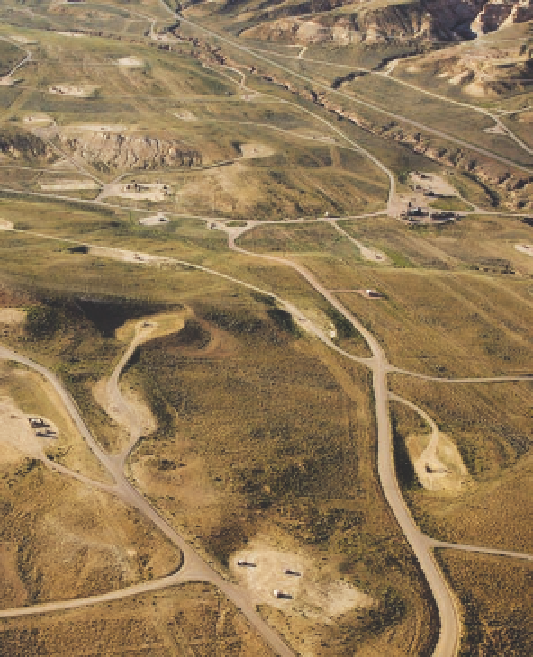Geoscience Reference
In-Depth Information
Debates often centered on whether natural forest dis-
turbances, such as fire and blowdowns, had the same
effect as tree cutting (see chapter 12). commonly, the
landscape patterns caused by natural disturbances in
wildland landscapes are thought to enhance biological
diversity, not because all native organisms find them
beneficial, but rather because the population sizes of
some species drop while others rise after the distur-
bance. the diversity exists because of the changes in the
landscape over long periods of time. Some landscapes
are large enough to accommodate such disturbances
without the adverse effects of fragmentation. others are
already so patchy that further timber harvesting would
most likely lead to the loss of some species.
Although timber harvesting and roads have surely
contributed to forest fragmentation in some areas (see
fig. 18.4), some forests are naturally divided into small
patches, that is, mostly edge forest, because of abrupt
vesting might further fragment the habitat in such
places, but there is reason to question whether interior
forest is broken up in the process. the loss of interior
forest may be most significant in places of relatively flat
topography and extensive forest, such as in some parts
of the Medicine Bow Mountains.
With regard to energy projects, a few well pads and
mines scattered about the landscape would have rela-
tively little effect on wildlife. However, in the Powder
River Basin alone, the energy boom during the past
20 years has led to more than 10,000 new wells for
oil and gas—all serviced by several thousand miles of
new roads (fig. 18.7) and having adverse effects on air
quality. Similar intensities of development are occur-
ring in other parts of the state, such as in the Green
River and Washakie basins. Moreover, sixteen wind
energy projects have been constructed in the state since
1999, primarily south of casper and along the inter-
state 80 corridor (fig. 18.8). More are envisioned. the
chokecherry and Sierra Madre Wind energy Project,
now on the planning boards, anticipates 1,000 turbines
spread over an area of about 350 square miles of sage-
brush-dominated shrubland near Rawlins. Aside from
fragmentation concerns, when vertical structures are
involved, such as the towers required for transmission
lines, prairie chickens and sage-grouse instinctively shy
away from the area to avoid the risk of predation by rap-
Fig. 18.7. Habitat and open space fragmentation by oil and
gas development is now common in parts of the Powder River,
Green River, and Washakie basins. Photo © Dave Showalter,
Lighthawk Aerial Support.
tors that use the towers for perches, such as ferruginous
hawks and golden eagles. All kinds of energy develop-
ment fragment wildlife habitat and have impacts on an
Ecosystem Management
Many difficulties associated with modern land man-
agement are attributable to rising demands on limited
resources. this is occurring at a time when climate
is becoming less favorable than when many societal
expectations and cultural traditions were developed.
ecosystem management is an attempt to achieve sus-
tainable land management by integrating existing eco-
logical information with the very real and difficult
challenges faced by managers. effective ecosystem
management also transcends artificial boundaries.
Much of the best wildlife habitat, for example, occurs
on private lands, whose owners depend on public land

Search WWH ::

Custom Search